- Your cart is empty
- Continue Shopping
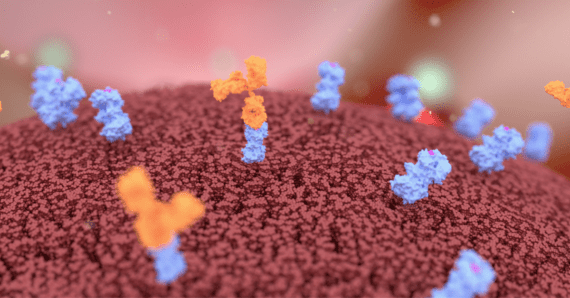
Targeted Warriors: How Monoclonal Antibodies Fight Cancer
mAbs are engineered to either kill the cancer cells or stop cancer cells from growing, find out the 7 ways mAbs can help to fight cancer.
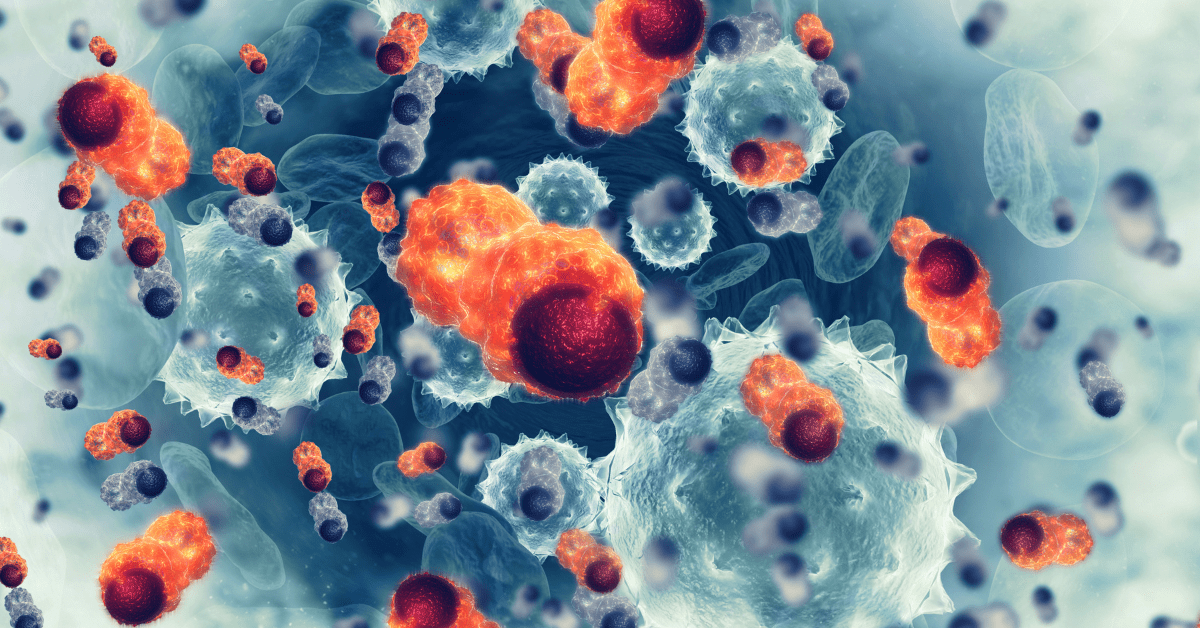
T cells, or T lymphocytes, are a specialised type of white blood cell that plays a crucial role in adaptive immunity, which is part of the immune system that adapts and learns to recognise specific pathogens. They work in coordination with other immune cells, such as B cells, which produce antibodies to neutralise pathogens, and various types of white blood cells that engulf and destroy foreign invaders. The proper functioning of T cells is essential for the immune system to effectively combat infections and maintain overall health.
T cells originate from hematopoietic stem cells found in the bone marrow. The developing T cells migrate to the thymus gland (where it derives its name from) and undergo maturation and development into different types of T cells, each with specific functions.
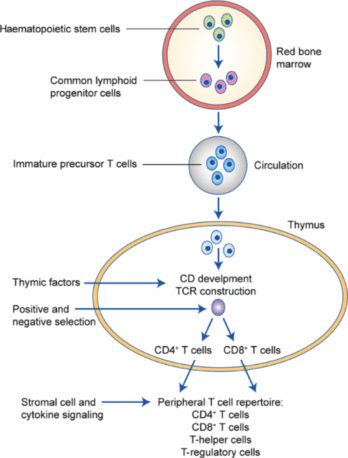
Credit: Raskov, H., Orhan, A., Christensen, J.P. et al doi: 10.1038/s41416-020-01048-4. Reproduced under the Creative Commons license
Each mature T cell contains a unique T-cell receptor (TCR), a membrane-bound heterodimeric protein found on the surface of the T cells. It typically consists of the alpha (α) and the beta (β) chains, though there is a minority of T cells expressing gamma (Ƴ) and delta (δ) chains. The TCR mediates the recognition of peptide fragments bound to major histocompatibility complex (MHC) molecules on antigen-presenting cells (APCs). These peptides are generated by proteolytic degradation of foreign or self-proteins within cells expressing MHC class I or class II molecules. The TCR associates with six additional adaptor proteins (CD3εγ – CD3εδ – CD3ζζ) to form an octameric complex to propagate signalling after activation.
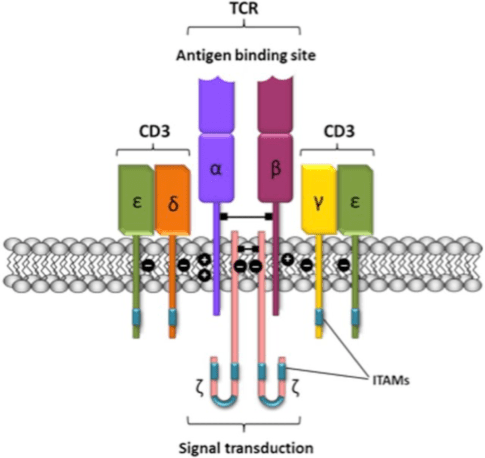
Credit: Franco R, Martínez-Pinilla E, Lanciego JL, Navarro G. doi: 10.3389/fphar.2016.00076. Reproduced under the Creative Commons license
These are also known the killer T cells, which are responsible for directly attacking and destroying infected or abnormal cells. They recognise and bind to antigens (foreign substances) displayed on the surface of infected cells, leading to the destruction of the targeted cells. CD8+ T cells are initially naïve and must be activated by interacting with APCs, which leads to the upregulation of more antigen-specific TCRs on the T cells. The activated CD8+ T cells then migrate into circulation and find their antigenic target killing the cells. CD8+ T cells recognise their targets by binding to short peptides (8-11 amino acids in length) associated with MHC class I molecules, present on the surface of the target cells.
CD8+ T cells mediate its killing function through different mechanisms. The first mechanism involves the use of the Fas/Fas Ligand (FasL). Activated CD8+ T cells express FasL which binds to Fas expressed by some target cells, leading to the activation of caspases and subsequent apoptosis of the target cells. The second mechanism involves the release of granzymes and perforin. Granzymes induce apoptosis in any type of target cell, while perforin punches holes in the target-cell membrane through which the granzymes can enter. Activated CD8+ T cells also produce cytokines such as IFN-γ, TNF-α, and TRAIL mediating cell apoptosis through various signaling. Once the target cell undergoes apoptosis, it is typically engulfed and digested by other immune cells, such as macrophages, to clear away the cellular debris.
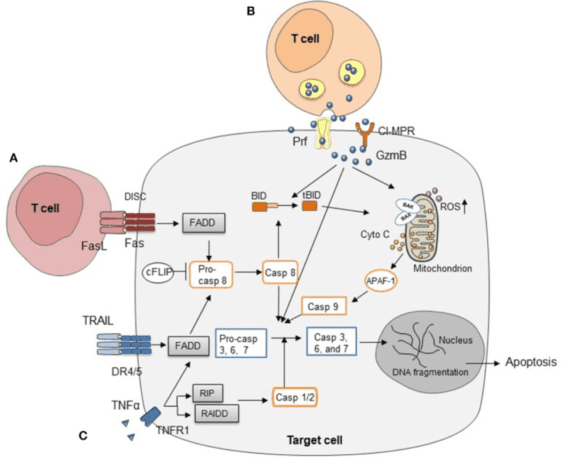
Credit: Du W, Cao X. doi: 10.3389/fimmu.2018.02979.
Reproduced under the Creative Commons license
These cells play a key role in coordinating the immune response. They help activate other immune cells, such as B cells and cytotoxic T cells, by releasing cytokines. CD4+ T cells become activated when they are presented with peptide antigens by MHC class II molecules expressed on the surface of APCs. Once activated, they divide rapidly and secrete cytokines that regulate or assist the immune response. These cells can differentiate into one of several subtypes, which have different roles. Different subsets of T helper cells (e.g., Th1, Th2, Th17) produce specific cytokines that help direct the immune response towards different pathways.
Regulatory CD4+ T cells (Tregs) play a critical role in maintaining immune system balance and preventing excessive immune responses. Their primary function is to suppress or regulate the activity of other immune cells to prevent uncontrolled immune reactions. The balance between effector T cells (which drive immune responses) and regulatory T cells is essential for a properly functioning immune system. Dysregulation in the number or function of Tregs can lead to immune-related disorders and contribute to the development of autoimmune conditions.
After an initial infection, some T cells transform into memory T cells. These cells “remember” the specific antigens encountered during the initial infection. If the same antigen enters the body again, memory T cells can quickly expand and mount a more rapid and effective immune response. Memory T cells may be CD4+ or CD8+ and are divided into central memory (TCM) or effector memory (TEM) subsets.
These cells are classified as the “unconventional” T cells. Unlike the CD4+ T helper cells and the CD8+ cytotoxic cells, γδ T cells trigger immune responses regardless of the MHC expression. γδ T cells express TCRs composed of γ and δ chains instead of the typical α and β chains by the CD4+ helper T cells and CD8+ cytotoxic T cells. γδ T cells are diverse and have been associated with various functions, such as the production of cytokines, chemokines, cytotoxicity, migration, and proliferation.
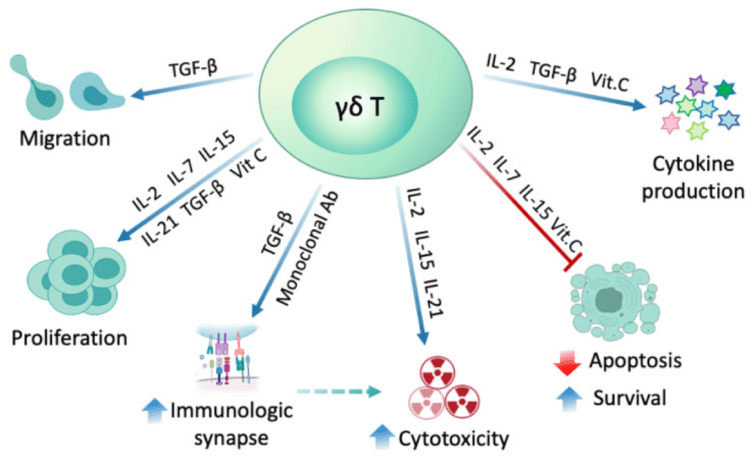
Credit: Yazdanifar M, Barbarito G, Bertaina A, Airoldi I. doi: 10.3390/cells9051305.
Reproduced under the Creative Commons license
NKT cells, also known as the invariant natural killer T (iNKT) cells, are a unique population of T cells that express an invariant aβ TCR and several cell surface molecules in common with natural killer (NK) cells. They recognise glycolipid antigens presented by CD1d and play an important role as immunoregulatory cells by modulating different immune cells such as CD4+ helper cells, CD8+ cytotoxic cells, B cells, and NK cells.
Mucosal-associated invariant T cells are defined by their expression of a semi-invariant αβ TCR which recognises non-peptide antigens, such as the vitamin B metabolites, presented by the MHC class I–like protein MR1. They play an important role in defense against bacterial and viral infections. MAIT cells can be activated by TCR-dependent and TCR-independent mechanisms and exhibit rapid, innate-like effector responses.
The human body has developed various defense mechanisms to thwart viral invasions and microbial assaults Among these, the formidable T cells in our immune system emerge as the unsung heroes, tirelessly patrolling and eradicating potential threats. Examining different types of T cells not only enhances our understanding of diseases but also sheds light on how our bodies respond to them. These cells play a crucial role in advancing medical research, holding the promise of numerous breakthroughs in the foreseeable future.
References:
Du W, Cao X. Cytotoxic Pathways in Allogeneic Hematopoietic Cell Transplantation. Front Immunol. 2018 Dec 19;9:2979. doi: 10.3389/fimmu.2018.02979.
Franco R, Martínez-Pinilla E, Lanciego JL, Navarro G. Basic Pharmacological and Structural Evidence for Class A G-Protein-Coupled Receptor Heteromerization. Front Pharmacol. 2016;7:76. doi:10.3389/fphar.2016.00076
Hackstein CP, Klenerman P. MAITs and their mates: “Innate-like” behaviors in conventional and unconventional T cells. Clin Exp Immunol. 2023;213(1):1-9. doi:10.1093/cei/uxad058
Perdomo-Celis F, Taborda NA, Rugeles MT. CD8+ T-Cell Response to HIV Infection in the Era of Antiretroviral Therapy. Front Immunol. 2019;10:1896. doi:10.3389/fimmu.2019.01896
Raskov, H., Orhan, A., Christensen, J.P. et al. Cytotoxic CD8+ T cells in cancer and cancer immunotherapy. Br J Cancer 124, 359–367 (2021). doi.org/10.1038/s41416-020-01048-4
Yazdanifar M, Barbarito G, Bertaina A, Airoldi I. γδ T Cells: The Ideal Tool for Cancer Immunotherapy. Cells. 2020 May 24;9(5):1305. doi: 10.3390/cells9051305.

Connect With Our Technical Specialist.

Request For A Quotation.

mAbs are engineered to either kill the cancer cells or stop cancer cells from growing, find out the 7 ways mAbs can help to fight cancer.

In recent years, chimeric antigen receptor (CAR) T-cell therapy has emerged as one of the most promising immunotherapy for the treatment of cancer. This therapy
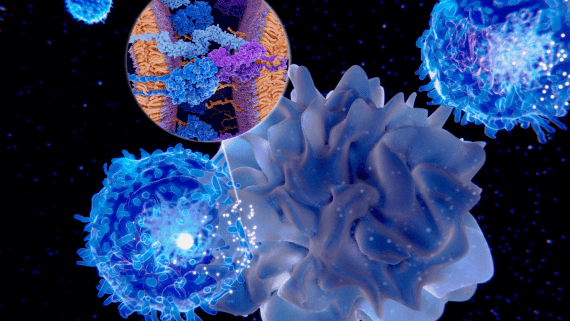
Cancer immunotherapy has progressed tremendously in recent years, with the emergence of innovative approaches like chimeric antigen receptor (CAR) T-cell therapy and T-cell receptor (TCR)

Contact our Customer Care, Sales & Scientific Assistance

Consult and asked questions about our products & services

Documentation of Technical & Safety Data Sheet, Guides and more...